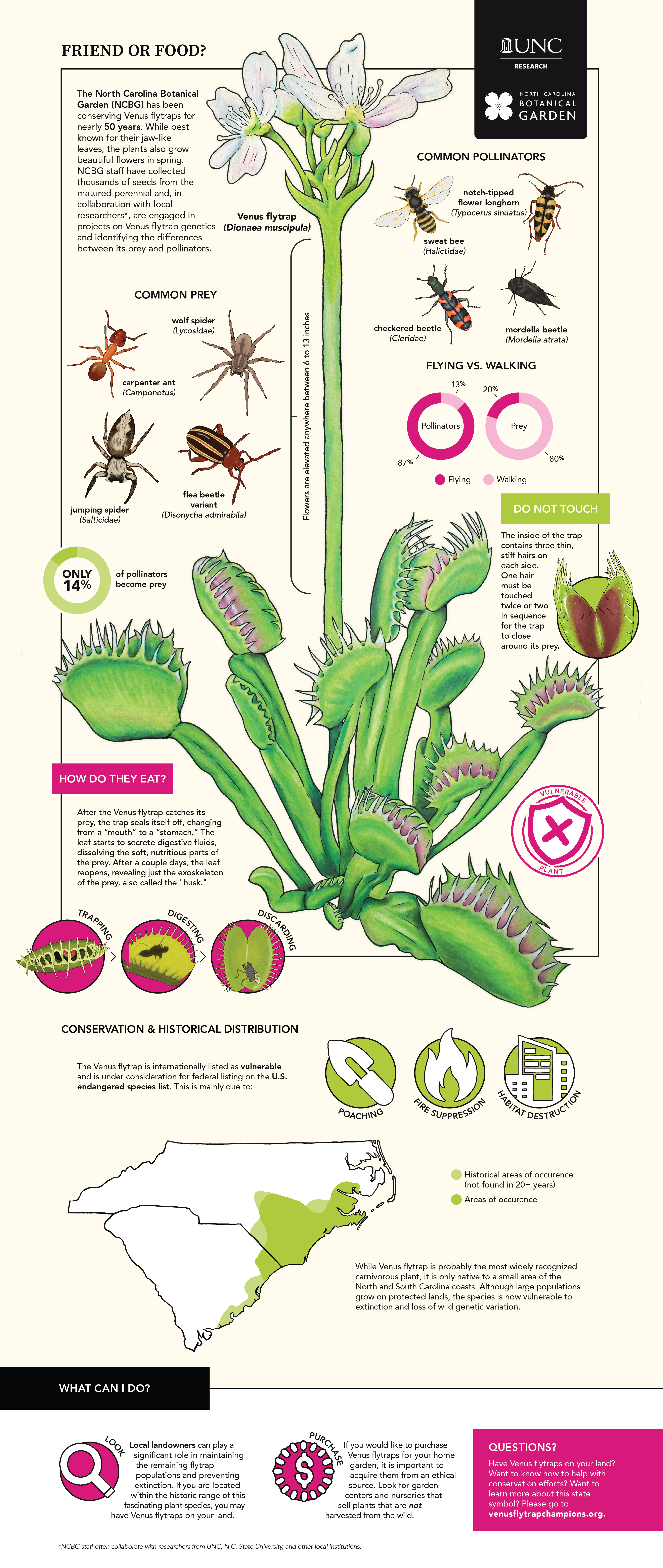July 27th, 2021

The North Carolina Botanical Garden has been conserving Venus flytraps, native to only the North and South Carolina coasts, for nearly 50 years. To better understand these carnivorous plants, UNC researchers are engaged in projects on flytrap genetics and differentiating prey from pollinators.